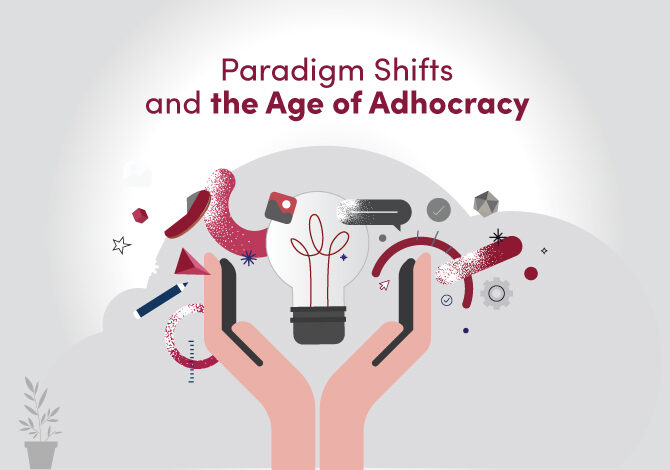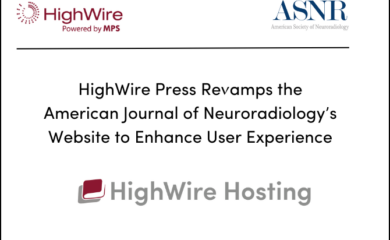I recently attended the STM meeting in Frankfurt. Two complimentary presentations really stood out to me. The first was the keynote, given by Professor Antonio Loprieno, President of the European Federation of Academies of Sciences and Humanities (ALLEA), who provided a historical perspective of scholarly communications. Loprieno highlighted three major scientific paradigm shifts in how scholarship is conducted and communicated, and he related those to the degradation of trust in science. The second was the presentation by Roger Schonfeld who reported on the preliminary findings of an Ithaka S+R study on scholarly publishing’s shared infrastructure. Schonfeld noted that publishers are transitioning from knowledge providers to service providers, and that in order to remain trusted intermediaries publishers need a well-regulated common infrastructure. This study was done with support from STM Solutions and a white paper summarizing the study will be available in November.
In the keynote, entitled Restoring trust in science/research integrity, Loprieno posed the questions, why do we find ourselves in the position of having to restore trust in science? Loprieno feels that we are currently witnessing a paradigm shift brought about by a twenty-year digital and institutional transformation which has eroded the public’s faith in the scientific endeavor. People question whether science is a public or private good; if the value of science is based on quantifiable merits or if qualitative criteria should be measured; and should excellence or inclusiveness be the basis for determining scientific funding. To explore these questions Loprieno discussed the evolution of how science is performed and communicated by defining and exploring three scientific paradigms.
The first scientific paradigm, placed historically at pre-1500 CE, is based around the manuscript as the principle scientific artifact. The manuscript was a handwritten document, perhaps a scroll made of papyrus or a book made of vellum. There often existed only one of these handcrafted documents in a particular geography, and it was accessible only in the library of a religious institution. The source of knowledge proclaimed in the document came from God, and thus the intellectual property rights were not an issue.
The second scientific paradigm, 1500 CE to 2000 CE, is centered on the printed book or periodical as the principle scientific artifact. Originally written out by hand by an individual author, these works were typeset and printed so that from one original many copies could be made and distributed. Intellectual property rights belonged to the author, since the knowledge came from the author’s mind or from the research performed by that author within their research institute. This also meant that the academy or university was seen as the source and location of knowledge.
The third scientific paradigm, post 2000 CE, was prompted by the popularization and proliferation of the World Wide Web. This vast computer network has changed scientific communications by breaking down barriers between knowledge creators and knowledge consumers. Many feel that the web has democratized science, making it easier to circulate diverse ideas. Others say that the web has made science less trustworthy because of disintermediation, taking authority away from the academy and the publisher. In either case the Internet has created an environment where intellectual property rights are hard to determine, and the channels to distribute information to large audiences are easy to utilize.
The shift from the print world to the electronic world is a relatively new phenomenon, and society is still working to put the appropriate guardrails in place to ensure trust and safety when it comes to navigating the Internet. Loprieno talked about how, in this third scientific paradigm, adhocratic values are ascendent. Adhocratic values are signified by a move away from centralized authority and a move toward empowering individuals. In this new paradigm science and knowledge belong to the community, and ideas and information are free-flowing across physical boundaries. In an adhocratic environment authority is hard to determine and provenance is uncertain, which is challenging when trying to communicate scientific facts. In this environment people are more likely to see science as serving the public, but that means the public needs to agree on facts; people value science more when it provides tangible, qualitative benefits, rather than simply providing knowledge; and people want the benefits of science to be applied broadly in the population. Loprieno does not make a moral or ethical judgement on the effect of adhocratic values when it comes to trust in science. Rather, he simply states that trust in science and research integrity is in need of constant negotiation.
Turning to Schonfeld’s talk, entitled Shared Infrastructure for Scholarly Publishing, I found his summary of a the Ithaka S+R study to be an interesting extension of Loprieno’s third scientific paradigm, particularly because the shared infrastructure is almost entirely web-centric. I see some of the adhocratic values discussed by Loprieno at play here. The shared infrastructure includes the organizations that define and manage identifiers and standards used by the scholarly publishing ecosystem to impose order and connect resources. It also includes the systems that manage the publishing process, including peer review, integrity and quality checks, as well as the discovery and hosting services that help researchers find, read and interpret the scholarship. In this scholarly marketplace there is a decentralization of these services and systems that can be in conflict with the need for a regulated and structured scholarly ecosystem.
Schonfeld set out the strategic context for the Ithaka S+R study, contending that publishers are transitioning to providers of services; that consolidation of those services has affected their development; that machines are central to the infrastructure; and that scholarship is not the trusted source of knowledge that it once was. He also commented that few providers of the shared infrastructure, both non-profits and for-profits, have achieved a sustainable balance of trustworthiness, access to money, innovativeness, agility, flexibility, and profitability. These challenges might lead one to conclude that the scholarly infrastructure remains unstable, with too many players creating inefficiencies and confusion in the marketplace. Or one might conclude that adhocratic values are at play, ensuring diversity and decentralization.
Breaking down the shared infrastructure into two specific areas, Identifiers and Standards Providers (the non-profit public utilities of publishing) and Enterprise Publishing Systems (the for-profit hosting and workflow vendors), Schonfeld reviewed the findings of the study and offered recommendations. For Identifiers and Standards, it was noted that publishers were largely responsible for setting up the administrative entities, such as Crossref and ORCiD, but that they have become frustrated at the lack of influence they now wield. Furthermore, the proliferation of providers and the lack of governance has created inefficiencies. The recommendation is for the governing boards of identifier providers to form a coordinating structure that draws in industry representation, and that this structure can create a vision for how identifiers can collectively contribute to the industry’s strategic priorities.
For Enterprise Publishing Systems, it was noted that a diverse marketplace of systems helps small and midsize publishers compete because they can take advantage of technology at competitive rates. However, the tendency for vendors to “lock-in” publishers by making the effort to switch vendors difficult, results in a lack of innovation. Schonfeld illustrated this dichotomy, pointing out that a startup can capture customers during the early adoption of new and innovative technologies, and if they are successful, they attract investors and evolve into a mature standalone provider. Once they achieve market share and make money for their shareholders, the diverse needs of an established customer base and the limits of old technology means that innovation becomes more difficult. This usually results in the sale of the vendor to a large publisher or other large infrastructure conglomerate. Although this may provide a stable home for the organization, innovation generally suffers, and customers, who may be competitive to the new owner, start to look for new options. The recommendation is for smaller and midsize publishers to provide a collective voice in the marketplace, and to ensure that vital software service providers have the means to remain independent.
Schonfeld emphasized three take aways from the Ithaka S+R study:
- We are experiencing the second digital transformation, an incredibly demanding and innovative time for scholarly communication.
- The competitiveness of the shared infrastructure market influences the competitiveness of the research publishing sector – and vice versa.
- There are an array of new needs for shared infrastructure, requiring investment and strategic governance from market participants.
We are now living in the beginning stages of Loprieno’s third scientific paradigm, characterized by the breaking down of barriers, the democratization of science, and the proliferation of diverse ideas. Although adhocratic values push us to devolve authority and create a more inclusive culture, we still need to have an agreed upon structure in order to ensure trust in scientific communication. For both the Identifier and Standards Providers and the Enterprise Publishing Systems, being part of the shared infrastructure is an important endeavor that requires collaboration around agreed principles and processes. This is best accomplished by maintaining and modernizing our shared scholarly infrastructure through collaboration as well as through the competitive marketplace that promotes innovation.
– By Tony Alves



